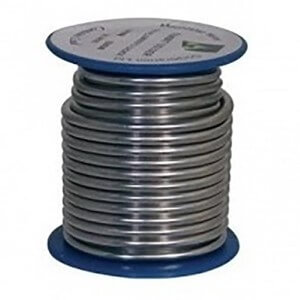Lead solder COSHH Assessment Form

A pre-filled COSHH Assessment Form for Lead Solder, with some example text reading:
Spillage and environmental:
Mobility: Store in a cool, well-ventilated area.
Accidental release: Pick up any released product and place it back in a container for reuse.
Lead solder, an alloy of tin and lead, is predominantly utilised for joining metal components in various applications that necessitate a low melting point and excellent electrical conductivity. Its widespread adoption spans several industries, including electronics manufacturing, plumbing, and other fields where dependable and robust connections are paramount.
Lead solder is particularly valued in electronics for its superior fluidity, which allows it to flow seamlessly into the joints on printed circuit boards (PCBs). The alloy's capacity to create strong mechanical and electrical connections is crucial for ensuring the functionality and longevity of electronic devices. The most commonly used formulation, the 63/37 tin-lead alloy, boasts a melting point of approximately 183°C (361°F), making it ideal for the delicate thermal requirements of electronic components.
Traditionally, lead solder was vital in the plumbing industry when joining copper pipes. However, due to mounting health concerns associated with lead exposure—especially in drinking water systems—there has been a significant shift toward using lead-free solder alternatives. According to guidance from Watersafe-approved plumbers, these alternatives not only meet health regulations but also maintain reliable performance for pipe connections.
Beyond electronics and plumbing, lead solder finds applications in various sectors, such as heating, ventilation, and air conditioning (HVAC). The alloy's low melting point and excellent wetting properties in these industries facilitate joining metals in systems where reliable thermal and fluid connections are necessary.
One critical advantage of lead solder is its low melting point, specifically around 183°C (361°F) for the 63/37 tin-lead alloy, which simplifies the soldering process. Its favourable wetting properties also enable the solder to spread uniformly and adhere effectively to the surfaces it contacts, forming strong bonds that withstand thermal and mechanical stress.
Despite its benefits, the utilisation of lead solder is increasingly declining across many sectors due to growing environmental regulations and health concerns associated with lead exposure. This shift has prompted a transition towards lead-free solder alternatives, which, while typically requiring higher melting points and different application techniques, are now being developed to meet the performance capabilities of traditional lead-based solders.
This document is:
- Recognised by local authorities
- Recognised by principal contractors
- Suitable for CDM sites
- Approved by H&S managers
If you want others to have confidence in your company, download and buy the proper documents today.
As with all our documents, our risk assessments are in Word™ format and available for instant download and use. You only need to buy them once.
Once you buy and download this document, it’s yours for life to use repeatedly.
Why not browse the HSEDocs catalogue of method statements, risk assessments, COSHH assessments, or industry-specific packages?
And for safety training relevant to your job, visit our online training courses.
GET THIS DOCUMENT
£8.99+VAT
- Available in Word™
- Fully customisable
- Add your Company Logo
- UK & EU Compliant

 CART
CART 